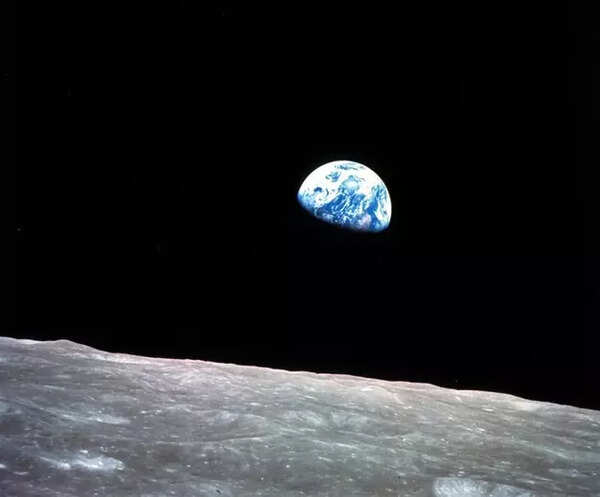William Anders, the Apollo 8 astronomer renowned for capturing the memorable” Earthrise” shot, passed away last month in a helicopter crash off the coast of Washington state. A preliminary report from the National Transportation Safety Board (NTSB ) was released on Tuesday, revealing that Anders was conducting a flyby close to a friend’s house on Orcas Island at the time the tragic accident took place.

This image shows the Earth behind the surface of the sun during the Apollo 8 vision, Dec. 24, 1968. ( AP )
Hans had informed his friend of his plans to flyby her home on the eastern shore of Orcas Island, according to the NTSB statement. The friend claimed that Anders, who normally carried out two passes and sometimes rocked the airplane’s wings, was not uncommon for these flybys, but that he “never carried out any kind of aerobatic maneuvers.”
On June 7, around 11: 37 am, the companion heard the familiar sound of Hans ‘ plane approaching. She observed a retro Beech A45 scurrying north past her home. But, as the aircraft momentarily disappeared behind trees and reemerged, it was heading north over the water. The friend primarily assumed that the left wing dropped as part of Anders ‘ routine, but the aircraft kept falling as the plane quickly lost level.
Together, another witness located northeast of Anders ‘ sister’s home captured video images of the plane using their phone. The video shows the plane making a almost vertical dive toward the water, with its appropriate wingtip striking the ground. According to the NTSB, these two people were the only testimony to come forth.
Off the northern shoreline of Orcas Island, the helicopter sank close to the north end of Jones Island. The body of 90- yr- ancient Anders was recovered that similar afternoon. The majority of the aircraft was recovered the following week and has been kept in storage for investigation, according to the organization.



